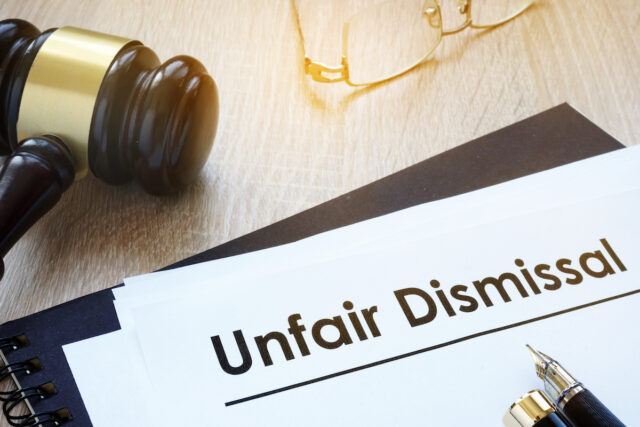
From time to time, you may decide or be forced to lay off employees at your New York company. Your New York business must manage employee performance and misconduct from the beginning of the employment relationship and onward in order to reduce the likelihood of wrongful termination litigation.
Your New York company, like any other, must deal with poor performance and inappropriate behavior in a way that doesn’t leave it vulnerable to wrongful termination claims.
Talk to injury attorneys at Sattiraju & Tharney, if you have particular questions regarding your rights and possible courses of action.
Some recommendations for businesses are provided below.
Give feedback on how they’re doing their job to your company’s staff
Include the challenging aspects of the task in the performance reviews. Appropriately point up the worker’s flaws and limitations as necessary. It’s not good for business if every employee at your company receives an A or B for their performance evaluation.
Always aim for objectivity rather than subjectivity when rating employees’ performance. Don’t label an employee a “troublemaker,” for instance, in a performance evaluation. This vague word may describe a disobedient worker or a courageous insider who is willing to speak up.
Rudeness is to be avoided at all costs
Each performance evaluation should end with some sort of summary. Specify the employee’s weak spots that need to be addressed. Define success criteria and timelines for the employee to reach them.
Before dismissing an employee, make sure they are aware of the specifics of their poor performance.

Taking Charge of Worker Misconduct
Respond quickly to any employee wrongdoing that arises. In the absence of firm policies and consequences for employee misconduct, you risk fostering a culture of laxity and tolerance.
Clearly define acceptable and unacceptable behavior in the corporate handbook. Provide your staff with copies of the manual. A lawyer representing an employee who is aware of but chooses to ignore your company’s policies is less likely to file a lawsuit on their behalf. Furthermore, your company has a better chance of winning in court if the employee does file a lawsuit.
Depending on the severity of the situation, your organization may take measures like:
- Reprimands and warnings delivered orally
- Letters of caution and rebuke
- Duties halted, no pay given
- Discharge
Before deciding to fire someone for off-duty behavior, give it some serious thought. New York State law generally prohibits discrimination in the workplace based on an employee’s legitimate, non-work-related political or recreational activities, with certain exceptions.
In what ways does an unlawful dismissal occur?
What does it mean when an employer fires an employee without just cause? When an employer fires an employee for an improper reason, this is called wrongful termination.
New York is an at-will employment state, meaning that businesses there are not allowed to fire employees for illegal reasons like discrimination or retribution.
An employee who is let go because of their disability or their gender identity might sue for wrongful termination. To the same extent, an employee has a right to claim wrongful termination if their employer fires them in retaliation.
Is there any recourse for unlawful dismissal?
It is true that employees have the right to file a lawsuit after being wrongfully fired. In every U.S. state, workers have legal protections against wrongful dismissal. Even in “at-will” employment laws, companies are still prohibited from terminating employees for improper grounds.

How can you show that your employer treated you unfairly?
Employees must show proof that they were terminated for an illegal reason in order to win a case alleging unlawful termination.
Wrongful termination may exist, for instance, if a manager falsely informed an employee that they were being fired because of a legally protected disability.
Unlawful termination can also be proven using circumstantial evidence. Employees who report sexual harassment and are then fired may have a case for wrongful termination.
Keeping detailed notes on interactions with managers and the reasons they retaliated against you might be invaluable for proving wrongful termination.
Discover the typical settlement a company receives for wrongful termination and how much it amounts to
A settlement for wrongful termination may be awarded in an amount that is greater or lesser based on the specifics of the situation. A clause guaranteeing secrecy is standard in many settlement agreements.
Should I sue for wrongful termination, and if so, how much?
Unfair termination settlements are typically based on the employee’s compensation at the time of termination and the strength of the employee’s case for unfair treatment.
When it comes to wrongful termination cases, 10% of national settlements are over $1 million. An attorney who specializes in wrongful termination cases can help you negotiate a reasonable payment.

Can you show a wrongful dismissal easily?
Workers must show that they were let go because of discrimination or retribution to have a case for unlawful termination.
Employees who fear reprisal after taking measures like testifying against their employer or filing a complaint with human resources would benefit from keeping detailed records of all interactions with their superiors.
Is the amount of a settlement for wrongful termination taxable?
Wrongful termination settlements are taxable, but only to the extent that the employee receives compensation. Loss of earnings, pain and suffering, and other similar damages fall under this category.
Payroll and income taxes may need to be withheld from any settlement payments including back pay, lost wages, or future compensation.
Although the settlement includes taxable items, some of them are exempt. To learn more about your legal options following a wrongful termination, speak with an attorney.
How long does it typically take to file a lawsuit after being wrongfully terminated?
Unlawful termination lawsuits can last anywhere from a few months to many years, depending on the evidence presented and whether or not the employer is willing to negotiate a settlement.
Even though some instances may be resolved in a matter of weeks, others may drag on for years.












